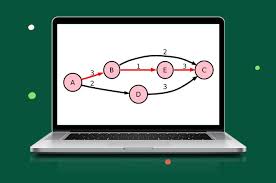The critical path method helps you manage task dependencies and establish realistic timeframes by using this technique. You can accomplish this. It is a way to manage a project that involves making a list of the most important things that need to be done. This article contains details of the critical path method, its examples, etc.
Continue reading to learn how the critical path method functions and how you can apply it to projects with your team.
What is Critical Path Method
The critical path method (CPM) is a way to figure out how flexible a schedule is and figure out what tasks are needed to finish a project. The longest series of tasks that must be completed on schedule for the project to be finished is known as a “critical path” in project management. The rest of the project will be delayed if critical tasks are delayed.
Since then, the critical path method has gained popularity for use in project planning and work prioritization. It lets you break down complicated projects into simple tasks and better understand how flexible the project is.
Critical Path Method with Examples
#1. Assign Tasks to the Project
The project must first be broken down into tasks, commonly referred to as activities. Each activity should ideally have a single accountable party and be simple to estimate. For instance, pouring concrete and digging should be handled separately because they may have different accountable parties (contractors, etc.).
#2. Task Estimates
Now let’s talk about meat and potatoes. Each work must be calculated after the project has been broken down into its component parts. It is necessary to decide on two things:
- Task Materials
- Task Timeline
Below is a list of available resources:
#1. Labor
They should be included as resources, even if there is no cost to the project. And such as when a project member is borrowed from a technical department (or you do it yourself, as in the case above) because their availability can affect the project deadlines.
Equipment. Equipment is frequently purchased at hourly rates or has an hourly rate attached to it if it is owned internally.
#2. Materials
If purchasing materials is necessary for the project, their cost is frequently simple to estimate using published prices or estimates can be gotten from suppliers.
Items with fixed costs, like a subcontractor. This is a double-edged effect because a subcontractor’s expenses are fixed, but they absolve you of responsibility for the project’s timeline and quality. Also, you must read the small print since otherwise, the charges might not be quite as “set” as you believe.
#3. Resource Leveling
You are required for 8 hours on Friday and 8 hours on Monday of week 1. On certain days, you are not available for 8 hours because you work a full-time job. Your resource calendar indicates that you are unavailable in project management parlance. As a result, we must rearrange the furniture.
Critical Path Method Project Management
The critical route is the project’s longest chain of interdependent tasks, according to project managers. Project managers can more readily prioritize work, create realistic timetables, maintain projects’ budgets, and lessen or eliminate delays by identifying the essential path.
By measuring the time between the start of the first task and the finish of the last item on the critical path, project managers can establish the overall duration of the project.
Advantages of the Critical Path Method
The following are the main advantages of using the critical path method that project managers should be aware of:
#1. Improved Communication
Critical path method schedules call for feedback from important stakeholders at every stage of the project’s lifespan. The timeline becomes more realistic and solid from the outset when the skills of diverse team members and subcontractors, such as architects, electricians, and construction managers, are combined.
#2. Prioritization is Made Simpler
Since project managers can better define priorities and calculate the float of each work by identifying the critical path.
Non-critical activities have a positive float, whereas important path tasks have zero floats. Teams can determine the priority of each task by calculating its float. The priority increases as the float decreases.
#3. Increased Scheduling Accuracy
The critical path approach is a well-liked and dependable tool for enhancing project schedule accuracy. The Program Evaluation and Review Technique (PERT), another project management tool that aids teams in estimating overall project time, is often used in tandem with CPM. Project managers can produce the most precise forecasts by combining PERT and critical path methods.
#4. Improved Risk Detection
Because critical path schedules clearly show how dependent tasks relate to one another, project managers are better able to anticipate the ripple consequences of delays. Compared to other systems that don’t manage dependencies, the critical path method gives you more chances to make changes early on and keeps more surprises from happening.
#5. Increased Adaptability
Critical path method network diagrams give project managers the tools they need to quickly adjust the schedule when things don’t go as expected. Project managers can use software that can simulate the effects of different changes to compare results and choose the best solution. The software allows you to quickly recalculate the schedule, according to Pepoon.
#6. Greater Visual Impact
Project managers may quickly comprehend a project’s timetable and progress by using critical path method network diagrams and Gantt chart representations of critical path schedules. Project managers and team members can have a more intuitive sense of a project’s trajectory by using these visual tools than they might be able to use a less visually stimulating option.
How is the Critical Path Method Calculated?
Here’s how to manually determine the critical path in project management. If you don’t use project management software or just want to double-check everything,
- List all of your tasks or activities, making note of their relationships and durations.
- Create a schedule network diagram, which shows the relationships between your tasks in a visual manner.
- The time it will take to finish each path through the diagram can be calculated by listing all potential paths and adding up the duration of each activity.
- Your critical path is the one with the longest overall duration.
- The advantages of critical route analysis in project management
- After you have determined the critical path for your project, you can rapidly determine.
- whether a delay will have an effect on the entire project and take appropriate action.
- To distribute resources, you might postpone less important jobs and provide more priority to tasks that are on the critical path.
What is the Purpose of the Critical Path Method?
The critical path method was created by DuPont in the 1950s. The methodology was initially utilized by the chemical industry to create the synthetic rubber known as neoprene. CPM streamlined development by streamlining production and maintenance.
Below is a more thorough explanation of each of these advantages of the critical route approach.
#1. Simple Budget Management
By reducing squandered time, which increases the cost of your human and other resources, you can ensure the project is completed on schedule. You can move personnel to critical path tasks, for instance, if there is float time surrounding one activity. This will cut down on expensive busy work and idle time.
#2. Appropriate Scheduling
Project managers can carefully assign personnel to activities that have float time, in addition to removing them from those with a lot of float time as appropriate. For example, they may assign float time projects to employees who are still in the learning process so that they can take their time mastering new skills.
#3. Project Management That Is Simpler
The critical path method divides a project into the tiny stages required to finish it, rather than looking at a big, complex project as a whole. It becomes simpler to manage resources, budgets, and talent when project managers concentrate on managing a project on a task-by-task basis as the project advances.
#4. Effective Resource Management
The critical route method enables project managers to pinpoint the deadlines for every task and, consequently, the resources required to execute them. As a result, it is simple to determine where resources should be allocated in order of priority at any given stage of the project. What’s more, it is simple to identify when resources can be diverted away from jobs that can wait so they can be employed to finish more urgent ones.
What is Critical Path Method & PERT??
Definition of PERT
Program (Project) Evaluation and Review Technique (PERT) is a technique used to evaluate projects. Its purpose is to help project managers plan, organize, schedule, coordinate, and govern their work. This program assists in comprehending the methodology used to complete a project and in determining the least amount of time necessary to finish the entire project. PERT was created in the 1950s with the intention of reducing project time and expense.
Definition of CPM
A well-known project modeling technique in project management is the Critical Path Method, or CPM. It is a resource-using algorithm that James Kelly and Morgan Walker created in the 1950s.
The main goal of CPM in projects is to figure out which tasks are important and which aren’t so that conflicts can be avoided and bottlenecks can be reduced.
What is the Difference Between CPM & PERT?
Understanding how long a certain task will take is the fundamental distinction between PERT and the Critical Path. Task durations are erratic with PERT, necessitating the use of a model to forecast time. A huge meeting or a construction project are two examples of projects where a critical path is more beneficial since task length may be predicted easily.
- Planning, scheduling, organizing, coordinating, and managing unpredictable activities are done using the project management technique known as PERT. In CPM, well-defined activities are planned, scheduled, organized, coordinated, and controlled. CPM is a statistical method of project management.
- PERT is a method of time management and planning. Unlike CPM, a technique for time and cost management.
- In contrast to CPM, which developed as a building project, PERT emerged as a research and development initiative.
Where is Critical Path Used?
The CPM approach sometimes referred to as “critical path analysis” (CPA), involves constructing a network diagram to illustrate the order in which tasks must be carried out in order to complete a project. Once these work sequences or pathways have been made, their lengths are figured out in order to find the most important path, which determines how long the whole project will take.
What are the 3 Constraints?
Here are the three types of constraints you need to deal with:
#1. Time Constraint
The term “time constraint” refers to the project’s timeline for completion, which includes the due dates for each project phase and the date on which the final deliverable will be made available.
#2. Scope Constraint
The specific objectives, deliverables, features, and functions of a project are defined by its scope. And also along with the duties necessary to complete it.
#3. Cost Constraint
All of the financial resources required to finish the project on schedule and within its set scope are included in the project cost, often known as the project’s budget. Remember that cost includes not just the money spent on goods but also the price of labor, vendors, quality control, and other elements.
What are the Characteristics of the Critical Path Method?
#1. Most Early Start Times.
Calculating how long each task will take is the next stage. Also, you might as well take a week to decide on a hosting provider after researching your possibilities and signing up for your top pick. It can take five minutes to choose a URL. It can take an hour to choose a template.
#2. Most recent Start Times.
By subtracting the time required to complete the present work from the earliest start time for the next item on the list, you can get the latest start time for any task on the list. The latest start time to start picking a URL is one week, for instance, if the earliest start time for selecting a website template is one week and five minutes and the time required to complete the prior activity of selecting a URL is five minutes.
#3. Construct a CPM Chart.
Put the first item on your list in a square or bubble, then draw lines from there to any possible further steps to represent the project. Place each step in a bubble or square with lines tying it to the steps before and after it. For each process stage, mention the earliest and latest start and finish times.
What is PERT Formula?
The formula for the Program Analysis Review Technique (PERT) uses the three points O, P, and M. The mean of the three estimated values is calculated using a weighted average rather than a simple average.
Given that the PERT method is based on probability theory and statistics, notably the Beta Distribution, the M value, Most Likely, is assigned four weights.
This beta distribution will provide a more regular, bell-shaped curve known as a normal distribution when plotted against a graph.
Conclusion
You can identify tasks required for a project’s successful completion using the critical path method. The longest series of tasks that must be completed on schedule in order to conclude the entire project is known as the critical path in project management.
Related Articles
- Project Management Tools: Best 25+Tools and Techniques
- CPM MARKETING: How It Works In Digital Marketing
- HOW TO CALCULATE COST OF GOODS SOLD: Definition & Formula
- REAL ESTATE CERTIFICATION: Top 10 Picks & How To Obtain Them
- Highest Paying Careers in Finance and Accounting






